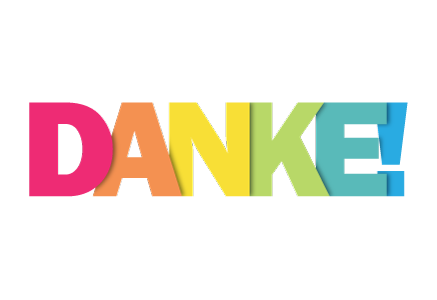The foyer and the open workshop spaces of the town hall are bustling with activity. In the open plenum, a group of artists is working on an installation. Young greenery sprouts from the mobile moss walls and the pipes of an aquaponics system snake up to the 3rd floor. The historic building was extensively remodeled 4 years ago. You won’t find offices, waiting areas or registration counters here.The counting machines that visitors used to use to draw processing numbers have been removed; the archive with paper files has been handed over to the museum.
I’m impressed, because just five years ago, this city hall was a cramped, dusty administrative building, where everything was printed out on paper and the word “digitization” was only spoken behind closed doors.
“How did you manage to pull off such a comprehensive transformation in such a short time?”, I ask the mayor. “Well, it certainly wasn’t trivial, because in total we had to transform the 12 city district offices, 7 units with 32 offices and own businesses, as well as the mayor’s business area, which means we were talking about around 6,000 jobs.
Save license costs in the future
“We were faced with the decision to continue to operate our infrastructure with proprietary solutions or to make ourselves independent of licenses, among other things. The topic of digital sovereignty was boiling quite high at the state level at the time, and at the same time our financial resources were limited. So we weighed existing licensing fees against migration costs, among other things, and came to the conclusion that open source solutions would make us more flexible and independent in the long term, while incurring only minor additional costs. Saved license costs for the future would additionally relieve our budget. In addition, the federal government had promised funds for the digitization of administrations as part of the Online Access Act.
Requirement: a connective and open ecosystem
At that time, my business unit was undergoing a transformation process to agile administration. I already had a team there of open-minded, curious people who were willing to embrace change and infect others with their commitment. Our requirements for the new infrastructure were quickly found: We wanted to be independent. Specialists should be able to contribute their strengths and innovations in their specialized areas and be replaced by even better specialists without affecting the overall project. The ecosystem of all solutions that connect to the communications and data infrastructure should be able to use a common interface. And, of course, it should be as climate-neutral and open source as possible.
The migration of our area actually worked within a very short time. My team actively searched for the required solutions and found open source providers whose products had already been on the market for many years and ran stably and securely. My team suggested turning our project into a kind of training for other units by setting up an intranet that worked like a wiki for everyone. We outsourced the wiki project to our apprentices, who designed it in a single weekend with the help of a self-organized hackathon and then went into implementation. Motivated by the commitment of our youngsters, the next units, which needed only a few specialized applications, followed suit.
The challenge: migrate specialist applications
Then the second stage followed – specialist applications such as those of the procurement office or municipal charges, which only had interfaces to Windows or iOS, had to be integrated. Our typical challenges were creating appointments or handling files. We had chosen good timing: MS365 was becoming increasingly en vogue, and because of that, many specialist applications were switching their integrations to MS Graph’s RestAPI. Since many open source solutions themselves also offer a compatible RestAPI, the manufacturers of the specialist applications were able to use the same code for data exchange with open source solutions that they also used for that with MS365 without any great effort.
Flexible workplaces
With funding from the federal government, we were finally able to equip all of our employees with laptops and mobile phones. This allowed us to make the workplaces flexible. Today, home office is standard for us. Most employees work hybrid, i.e. about 3 days from home, 2 days in the office. This has freed up office space, which we can now offer to our citizens or non-profit initiatives for their own purposes. Employees are welcome to use the room booking app, which is linked to their calendar, to flexibly occupy their workspace on a weekly basis. We also offer the same option to our citizens – regardless of whether they need to make an appointment at the registry office, the public order office or the road traffic office. The online appointment booking system is directly linked to the calendars of our employees and is now the most frequently used tool for our citizens.
Ideas for improvement
Our trainees work about twice a week in external co-working spaces, where they can exchange ideas with freelancers or company employees and get hands-on experience of developments in the business context. When they like something, they post it on our internal Kanban board. One of these ideas, for example, led us to integrate the app of a small open source start-up into our infrastructure. It’s a voting app that we regularly use to poll citizens about our ideas or ask for suggestions for improvement. Previously, we did something like this rather semi-honestly with postcards that we sent out once a year.
Ultimately, we were also able to relieve our archivists, whose time was taken up with far too much redundant information on a wide variety of papers from different departments. The connection to a document management and file sharing system ensures that all documents are centrally archived and can be accessed by everyone. In ongoing projects, employees can be notified when content changes.”
Just fiction?
Even if the city administration described is purely fictional, reality is not as far away as it seems. Not only worldwide, but also in Germany, there are many examples of administrations that are already using open source solutions.But digital sovereignty goes further: an open source alternative to MS Graph does not limit the choice of third-party and specialist applications, because all these solutions can be compatible with all open source solutions and with Microsoft. The implementation is as diverse as the structure of the administration behind it. However, more than an online access law is needed for digital administration, which sees itself as a service offering for all. Politicians need an understanding that open source solutions are both powerful and secure, as well as the prerequisite for digital independence.
To create a true counter to the big solutions like Microsoft, we need to think small.Many interchangeable building blocks of solutions fit into a well-defined basic framework, such as the well-defined RestAPI of MS Graph or its open source alternative. Only in this way can everyone benefit from innovations.
Nevertheless, the transition can and may also be hybrid, i.e. the simultaneous operation of open source solution alongside proprietary offerings. To paraphrase the city of Mannheim, “Open source where possible and commercial software where necessary.”
Examples of open source solutions in public institutions:



